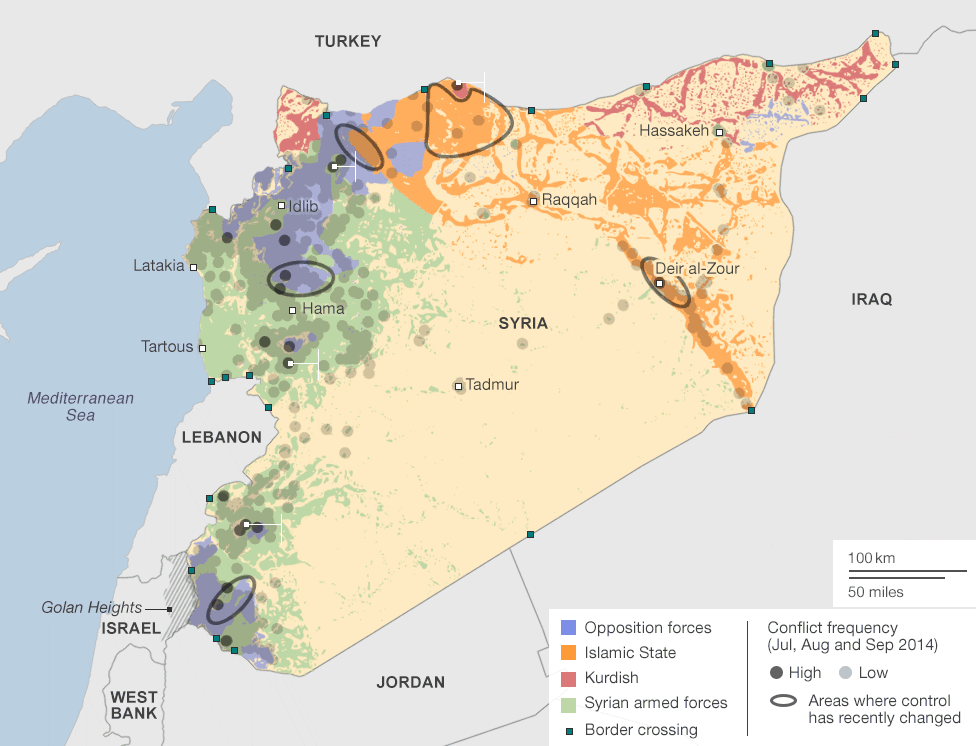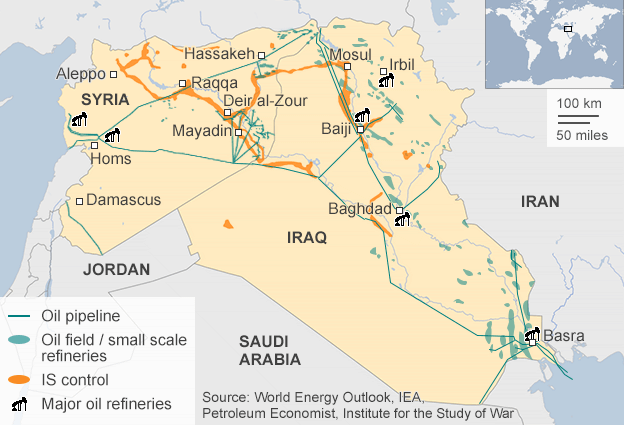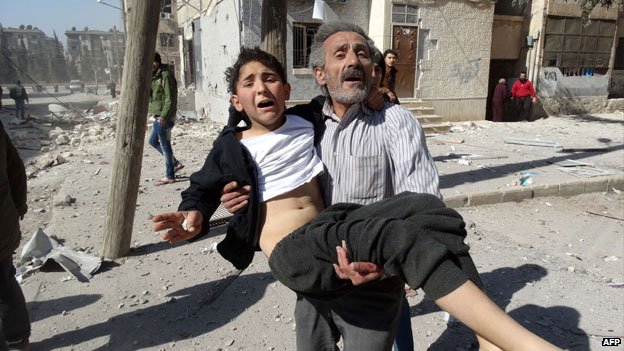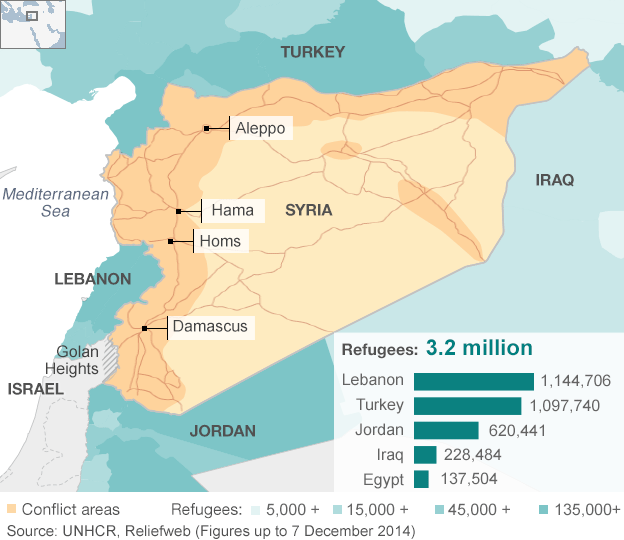Syria: Mapping the conflict
Territorial control in Syria has changed many times since the country's uprising began more than three years ago and the current conflict is characterised by fluctuating frontlines.
In particular, over the last few months, fighters from Islamic State (IS) - the extremist group that grew out of al-Qaeda in Iraq - have been battling regime forces in new areas, clashing with other armed groups close to Damascus as well as invading Kurdish regions.
According to the
Syria Needs Analysis Project (Snap), IS jihadists are now in full control of the eastern region of Raqqa and hold significant swathes of territory in Aleppo to the north and Hassakeh and Deir al-Zour in the east.
Other armed opposition groups have gained substantial ground in Idlib and Hama to the north and to a lesser extent, Deraa and Quneitra in the south, Snap analysis suggests.
Meanwhile, the US-led coalition is continuing to carry out air strikes, begun in September, on areas controlled by IS (formerly known as Isis). The US, with Bahrain, Jordan, Qatar, Saudi Arabia and the United Arab Emirates, have carried out more than 200 attacks on IS in Syria since 23 September.
Oil resources
The first week of US-led military operations targeted oil fields and military bases controlled by IS. The oil refineries were believed to be producing "between 300-500 barrels of refined petroleum per day", generating as much as $2m (£1.2m) per day for the militants, a key source of revenue.
Conflict history
The conflict has its roots in protests that erupted in Deraa city in March 2011 after the arrest and torture of some teenagers who painted revolutionary slogans on a school wall.
Opposition supporters - angered by the regime's use of lethal force to crush pro-democracy demonstrations - first began to take up arms to defend themselves and later to expel security forces from their local areas.
As the country descended into civil war, armed rebel brigades battled government forces for control of cities, towns and swathes of countryside.
During 2012, rebel forces enjoyed a series of tactical successes, taking control of several outlying suburbs and towns around Damascus, and ousting troops from large parts of the second city of Aleppo.
However, the advances were not decisive. By the start of 2013, the government began to recapture opposition strongholds around the capital, while there was stalemate in Aleppo, with the city divided into rebel and loyalist-controlled sectors.
Then, in June 2013, government troops backed by fighters from the Lebanese Shia Islamist movement, Hezbollah, recaptured a number of rebel strongholds.
Rebel forces have also been affected by deep divisions among groups. Secular moderates are outnumbered by Islamists and jihadists linked to al-Qaeda, whose brutal tactics have caused widespread concern and triggered rebel infighting.
Humanitarian crisis
The escalating violence and recent IS advances have had a significant humanitarian impact on Syria and its neighbours.
Syria is now the world's biggest internal displacement crisis, with an estimated 6.5m people forced from their homes but remaining in the country.
Overall, the UN Office for the Co-ordination of Humanitarian Affairs (Ocha) estimates that there are 10.8m people in need inside Syria.
Meanwhile, more than three million Syrians have fled the country's borders, mainly taking refuge in surrounding countries.
Lebanon and Turkey have each taken in more than one million Syrians, while Jordan, Iraq and Egypt have become home to hundreds of thousands more.
Syrian refugees in the region
BBC News - Syria: Mapping the conflict





